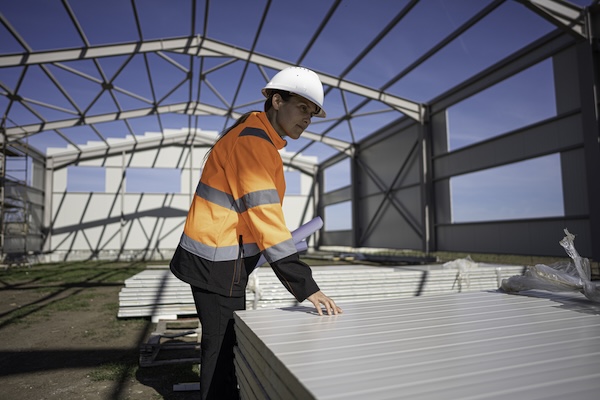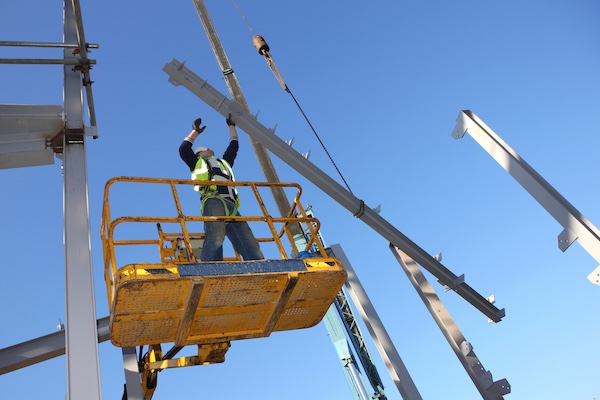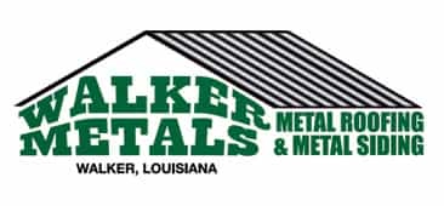With metal buildings growing in popularity every year, there’s no better time to invest in building one for yourself! Whether you’re interested in erecting steel building projects for the very first time, or considering upgrading any existing buildings on your property, one of the biggest decisions you’ll face is whether to handle the building components with or without contracted help.
The choice between DIY construction or hiring professionals can significantly impact your budget, timeline, and the final quality of your construction project. While both scenarios will see your project through to its completion, you’ll want to evaluate your resources and invest in the path that is most practical on a case-by-case basis.

Erecting Steel Building Structures with the Help of Contracted Professionals
Hiring experienced contractors to assist in translating your structure from a blueprint onto a solid foundation is a common approach for property owners looking to save themselves time and trouble throughout the process. Moreover, certain steel building projects not only encourage but require professional expertise for safety, code compliance, and optimal performance.
The requisite engineering experience becomes a more difficult threshold for a DIY-er to bypass as building complexity increases accordingly. Multi-story buildings, structures with complex roof lines, or buildings requiring specialized design features should be professionally installed.
This is true of large scale projects in particular, namely buildings exceeding 40×60 feet that typically require specialized equipment and experienced crews due to their size and scope. In these instances, the logistics of handling large steel components safely requires professional expertise.
Additionally, buildings intended for business use often have stricter code requirements and inspection standards. Professional contractors understand these requirements and can ensure compliance end-to-end. If your building site has drainage issues, challenging soil conditions, or requires extensive site preparation, professional installation is probably the better option.
The Appeal of the DIY Approach to Construction
For those interested in unique projects or those looking to improve their own contracting skills through hands-on trial and error, the appeal of a do-it-yourself construction job can represent an exceptional opportunity. From a logistical standpoint, the DIY approach has become an increasingly popular approach among property owners who want to save money and maintain control over their construction timeline.
The primary benefit of erecting steel building components without contracted help is cost savings, with up to thousands of dollars of labor costs shaved down to a minimum. By keeping your overhead expenditures lower, you’re able to avoid unnecessary financial stress and focus your resources elsewhere in the scope of your project.
Pre-engineered steel building systems are designed with the DIY market in mind, making taking the build into your own hands more accessible than ever before. They come packaged with detailed instructions, pre-engineered plans, and all necessary hardware to complete your build. The components are precisely manufactured to fit together, making the assembly process more straightforward than traditional stick-frame construction.
Most kit manufacturers provide comprehensive support, including phone assistance if you encounter challenges during the building process. Walker Metals experts are always available to offer quick and free consultations to help you along on your journey.
Examples of Great Projects to DIY
It’s important to remember that not every steel building project is suitable for DIY erection. Smaller, simpler structures work best for first-time builders:
- Carports and RV covers (up to 30×40 feet)
- Storage buildings and workshops (single-story, basic design elements)
- Agricultural buildings (barns or equipment storage)
- Hobby shops and garages (standard features, reasonable square footage)
These projects typically require basic construction knowledge and standard tools most homeowners already possess. If you’re comfortable reading blueprints, using power tools, and following detailed instructions, you’re likely capable of erecting steel building components on the simpler projects listed above.
Making the Right Choice for Your Project
Consider the following factors when deciding between DIY construction and professional installation:
- Your Skill Level: Honestly assess your construction experience and comfort level with the project scope.
- Availability: DIY builds typically take 2-3 times longer than professional installation. This timeline can stretch anywhere between 2 and 10 weekends on a DIY building project.
- Assistance: If attempting a DIY build, you may not need outside contractors, but you’ll most certainly still need help. Plan to have 2-4 helpers available on site throughout every phase of the project.
- Tool Access: Professional contractors have specialized tools that speed up installation and improve quality.
- Local Code Requirements: Some areas require professional installation for certain building types or sizes.
- Insurance Considerations: Check whether DIY installation affects your insurance coverage or warranty protection on your property.
Critical Steps in Erecting Steel Building Structures
Whether you choose DIY or professional installation, certain steps are critical to ensure a successful build in either case.
Site Preparation and Foundation Work
Proper site preparation forms the foundation of any successful steel building project. The building pad must be level, well-drained, and properly sized. Foundation requirements vary by building size and local codes, ranging from simple gravel pads to full concrete slabs with footings.
Obtaining Proper Permits
Most areas require building permits for steel structures, regardless of size. Contact your local building department early in the planning process to understand permit requirements, setback restrictions, and inspection schedules. Permit costs are typically minimal compared to the potential penalties of unpermitted construction.
Component Assembly and Erection
Pre-engineered steel building components are designed to fit together systematically. Start with the primary structural frame, ensuring all connections are properly aligned and tightened to specification. Install wall and roof panels after the structural frame is complete and square.
Quality Control and Safety
Whether handling the work yourself or supervising contractors, maintain focus on safety and quality. Use proper fall protection equipment when working at height, wear appropriate safety equipment, and double-check all connections and fasteners before considering any phase complete.
Common Mistakes to Avoid During Steel Building Construction
Understanding the potential pitfalls helps ensure the success of your DIY metal building project:
- Inadequate Site Preparation: Rushing through site prep often creates problems further down the line. Take time to properly level and compact the building pad as your foundation is the main key to your project’s longevity.
- Ignoring Manufacturer Instructions: Every steel building system has specific assembly requirements. Deviation from manufacturer specifications, however slight, can void warranties and compromise your project’s overall structural integrity.
- Poor Fastener Installation: Proper fastener installation is critical for building performance. Use recommended tools and techniques, ensuring all fasteners are driven flush and properly sealed.
- Weather Considerations: Don’t attempt erecting steel building components in high winds or inclement conditions. Wait for appropriate breaks in the weather to ensure the safety of everyone involved in the build.
- Flimsy Materials: Even the most well thought out project will be jeopardized by the use of poor-quality materials. That’s why it’s always worth the money to invest in top-tier American made building materials.
Frequently Asked Questions

Below you’ll find some answers to common questions that may arise while you’re engaging in the initial planning or decision-making process:
What tools are required for erecting steel building kits?
Basic projects require standard tools from a local hardware outlet including but not limited to: drills, wrenches, levels, ladders and measuring equipment. Larger projects may require heavy-duty lifting equipment or scaffolding.
Can I mix DIY work with professional services?
Yes! Many property owners handle site preparation and simple assembly while hiring professionals for complex components like large metal roofing systems or specialized design elements.
How do I know if my building site is suitable for DIY erection?
Level sites with good drainage and easy access work best for DIY projects. Sites requiring extensive preparation or involving challenging environmental conditions benefit from professional site evaluation.
What happens if I make mistakes during DIY installation?
Most manufacturers provide technical support to help resolve issues as they arise. Serious mistakes may require professional correction, so it’s important to proceed carefully and ask for help when needed as you go versus forging ahead with your best guess.
Are there building codes specific to steel buildings?
Steel buildings must meet the same building codes as other structures. Pre-engineered buildings are designed to meet standard codes, but any number of variations may apply so it’s always important to double check with local authorities.
How does DIY installation affect my building warranty?
Most manufacturers honor warranties on properly installed DIY projects, but improper installation or damage to building components during the building process can void your coverage. Follow all manufacturer instructions and retain any relevant documentation of your work.
Walker Metals: Steel Building Professionals You Can Trust
At Walker Metals, we support both DIY builders and those who prefer to save themselves time and energy by opting for professional installation when erecting steel building structures. With decades of experience at our disposal, we’re ready to offer detailed guidance during the initial planning process, empowering you to make the best decision for your project.
We are proud to serve property owners across the Gulf South, and empower them to take on their most ambitious builds yet. Ready to begin your journey towards completing your newest steel building project? Contact Walker Metals today to discuss your options and get a free, no-obligation estimate or reach out to us by phone at (225) 791-7791. s, contact the experienced professionals at ADCO Metals today. We sell metal building kits and offer installation services, too.
